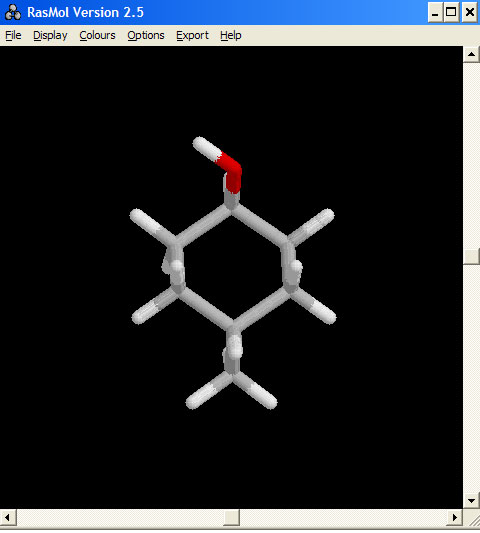
NMRPredict Help
| Help overview | ||
| Running a Prediction | ||
| C13 NMR Prediction in Detail | ||
| Proton NMR Prediction in Detail |
Inspecting Prediction Results
- Overview Tab. This displays a summary of both proton and carbon results
- #C the atom number (as in the MOL file.)
- C-Best the best shift value for the C13 prediction. This is based on the quality of prediction using the HOSE code and Neural Network technique. A sophisticated algorithm selects the "Best" value based on structural features and statistical parameters derived from the calculations
- C-HOSE The HOSE code predicted value
- C-Net The Neural Network predicted value
- H-Best The Best proton predicted value taken from the conformer and increment values perhaps with a correction made based on training against 1,000,000 assigned shift values
- H-Conf The proton prediction from the conformer method
- H-Inc The proton prediction from the increment method

- C-13 Tab. Displays details of the carbon prediction.
- # - the carbon atom number
- Mult the multiplicity. (SDTQ)
- Best the best shift value. Either from the HOSE code or the Neural Network prediction
- From where the best value came from, either from the HOSE code or the Neural Network prediction
- Net the Neural Network shift results
- HOSE the HOSE code shift results
- Shell the maximum number of HOSE code shells reached
- Min the minimum value from the database
- Max the maximum value from the datbase
- Hits the number of hits used in the database
- Coupling Constants the C-X coupling constants (if available)
Double clicking on a row in the Carbon Grid drills down to the data behind the prediction.
A list of identical structures (if any) found in the database is also given. Clicking on the list displays the details.
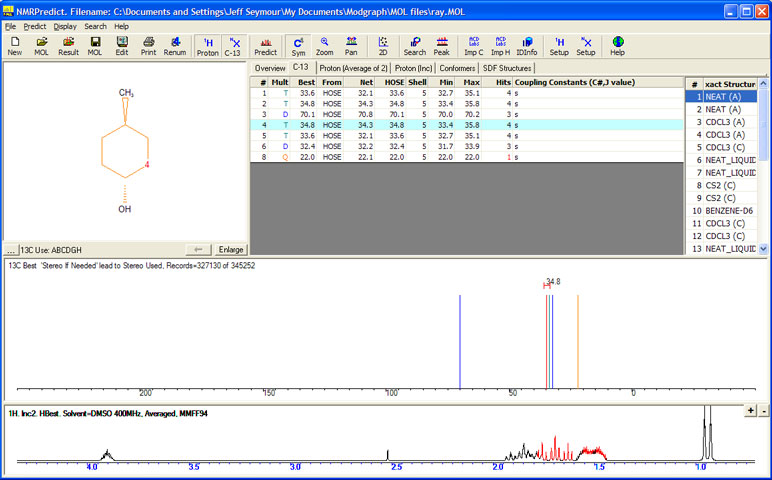
- Proton (Average)Tab. Displays the proton shifts and couplings from the conformer predictions.
- C the heavy atom number
- H - the proton atom number
- Equ the equivalence group which was assigned automatically
- Best the best proton prediction value
- From how the best proton prediction value was arrived at. f(C,I) means the value is a function of both the conformer and the increment methods, that the chemical environment has been seen in the 1,000,000 training set and that a correction factor has been applied. f(I) means that no correction was possible and the increment value is besing used
- Shift the chemical shift for this proton from the conformer method
- Info Error/ warning information. This includes:
- lab Labile proton
- upg Unparameterised group
- upa - Unparameterised atom
- qcf - Bad steric term, strained
- iva - Invalid atom, not parameterised
- ari - Arithmetic error
- Min the minimum values from the conformers produced
- Max the maximum values from the conformers produced
- Coupling constants (C#, J value) the coupling constants for this proton calculated by the conformer method
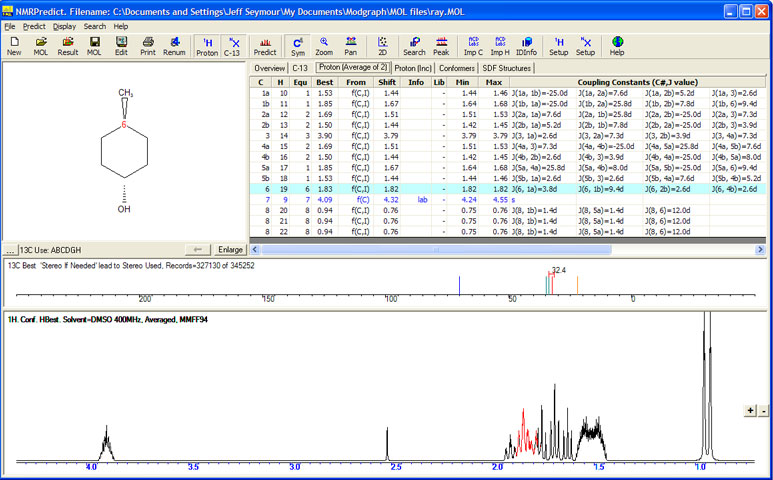
- Proton (Inc)Tab. Displays the proton shifts and couplings from the increment predictions.
- C the heavy atom number
- H - the proton atom number
- Equ the equivalence group which was assigned automatically
- Best the best proton prediction value
- From how the best proton prediction value was arrived at. f(C,I) means the value is a function of both the conformer and the increment methods, that the chemical environment has been seen in the 1,000,000 training set and that a correction factor has been applied. f(I) means that no correction was possible and the increment value is besing used
- Shift the chemical shift for this proton from the increment method
- Info Error/ warning information. This includes:
- lab Labile proton
- beta Beta substituent missing
- alpha alpha substituent missing
- inc Increment missing
- nop Sub-structure not recognised
- Lib whether a library has been used to calculate the increment prediction value. "A" means the hand selected internal database has been used. If you create user databases (with the letters N-Z) these will show in this column
- Min the minimum values from the conformers produced
- Max the maximum values from the conformers produced
- Coupling constants (C#, J value) the coupling constants for this proton calculated by the increment method
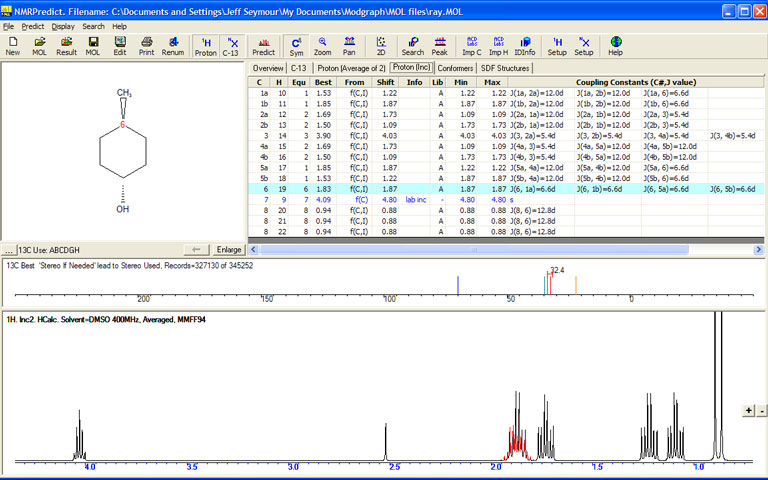
- Conformers Tab. Displays information about the conformer used to calculate the Proton spectrum.
- # - Conformer number
- Energy - the energy of the conformer
- Weight the weighting used in the averaging process
- Calc Yes/No was the conformer used in the calculation. Conformers are excluded on the basis of the Max Energy Diff setting. This can be changed using the menu item Predict, Options, Proton Prediction Options
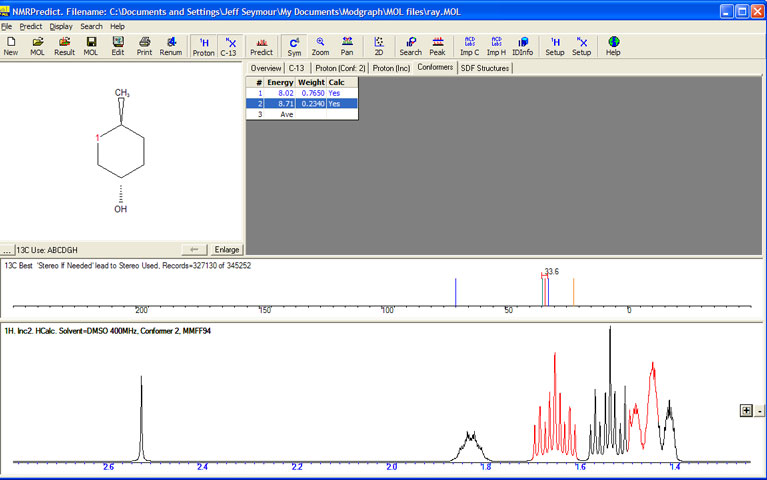
Double clicking on a row in the conformer table launches Rasmol (for users who have Isis Draw loaded) and shows each 3D conformer.. The spectrum changes as each confromer is chosen.
